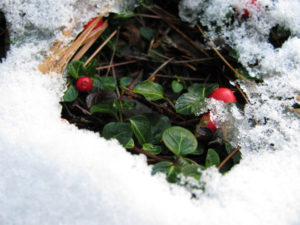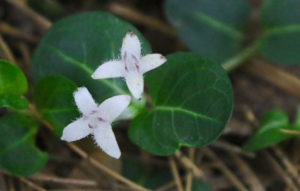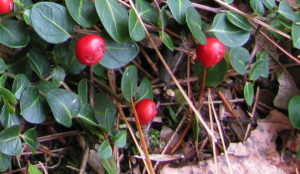(Photos and story by Diane De Luca)
As the leaves fall, and brown hues are dominant, the persistent green plants stand out. Even as the snow falls, the greens still peak through. At this time of year, the partridgeberry may be most noticeable as the deep green leaves contrast with the grays and browns of late fall and winter. Partridgeberry is one that reminds us of the season, and cheers as snow covers the ground.


Gardeners favor the Partridgeberry (Mitchella repens) for winter gardens with its deep green leaves and brilliant red berries.

